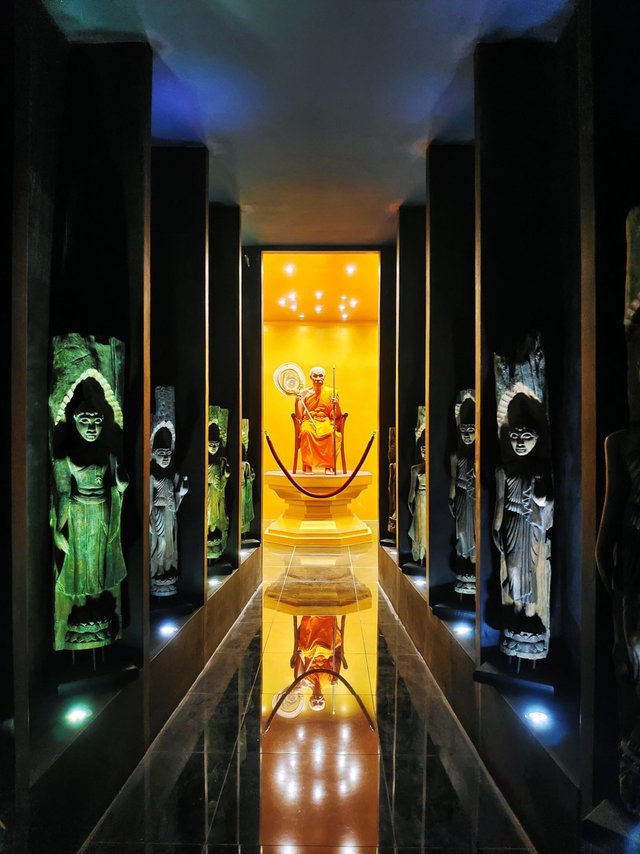
Hello everyone
Visiting the new Thai Museum of Phuket feels like embarking on a journey through time. As soon as I opened the door and stepped inside, I was transported to Thailand’s earliest days. The museum houses a fascinating collection of art and artifacts from various historical periods, such as the Tharawadi, Srivijaya, Lopburi, and Rattanakosin eras – the latter representing modern-day Thailand🇹🇭
Recently, I discovered the Traveling Steem community, where I shared my first post, last week, following the Weekly Dynamic Protocol to Run in Traveling Steem 🚌, as it was a Wednesday, this was a TS FOOD post. Since today is Thursday, it’s time for #ts-culture, and what better way to explore Thai culture than by taking you along on a tour of the breathtaking new Thai Museum of Phuket?
As I wandered through the exhibits, I was captivated by the intricate beauty of Thailand’s architectural heritage. Ornately carved temples and elaborately decorated buildings stood as testaments to the country’s rich artistic traditions. Exploring these treasures filled me with a sense of pride as I delved into Thailand’s way of life and its cultural achievements over the centuries.
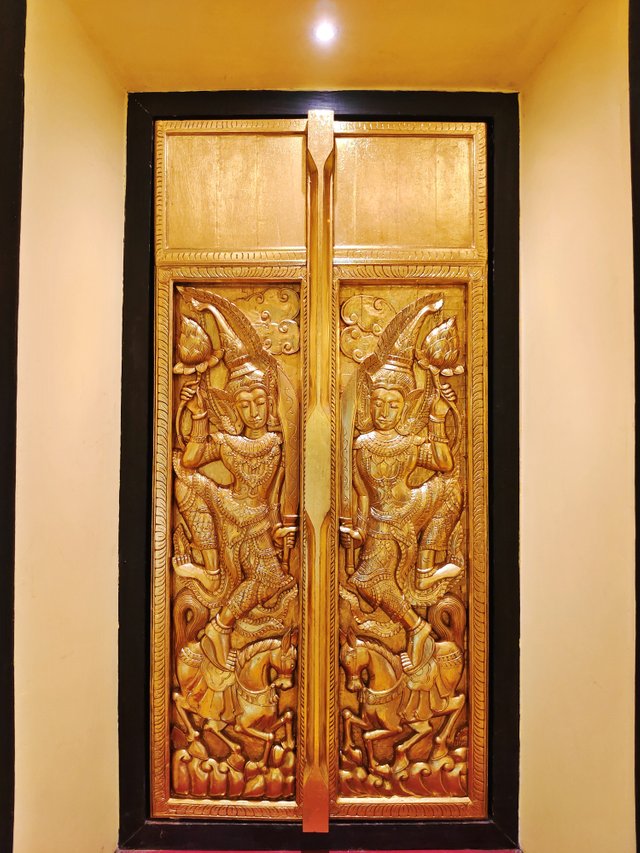
The Thai Museum of Phuket is more than just a tourist attraction; it’s a space for locals and visitors alike to connect with Thailand’s cultural heritage. Whether you’re Thai or visiting from afar, the museum offers a deeper understanding of the country and its people.
So, if you ever find yourself in Phuket, make sure to visit the Thai Museum. It’s an inspiring experience that will leave you proud of the Thai identity and in awe of the nation's traditions and beauty.
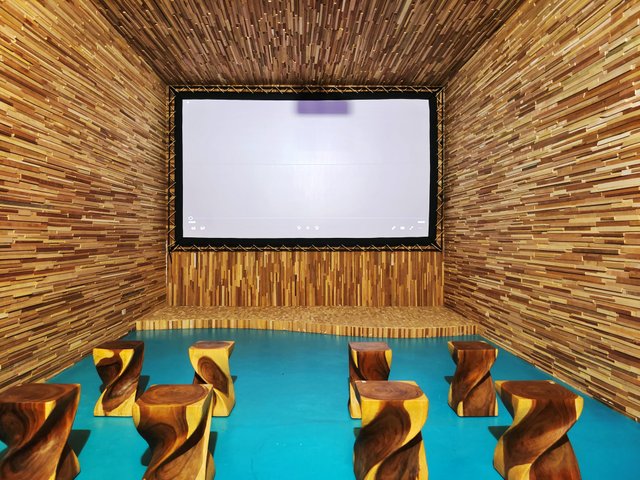
As I explored the exhibits at the Thai Museum, I was struck by the meticulous attention to detail and the care devoted to preserving the artifacts on display. The guide provided fascinating insights into each piece, explaining their historical significance and cultural importance. I was captivated by the stories and amazed at how much I was learning about Thailand's rich history.
One of the things that stood out to me was the museum’s innovative use of technology. In one room, I watched a short video offering a concise overview of Thai history. In another, a holographic display vividly illustrated what life was like in Thailand during different historical periods. These immersive experiences truly brought Thailand’s past to life.
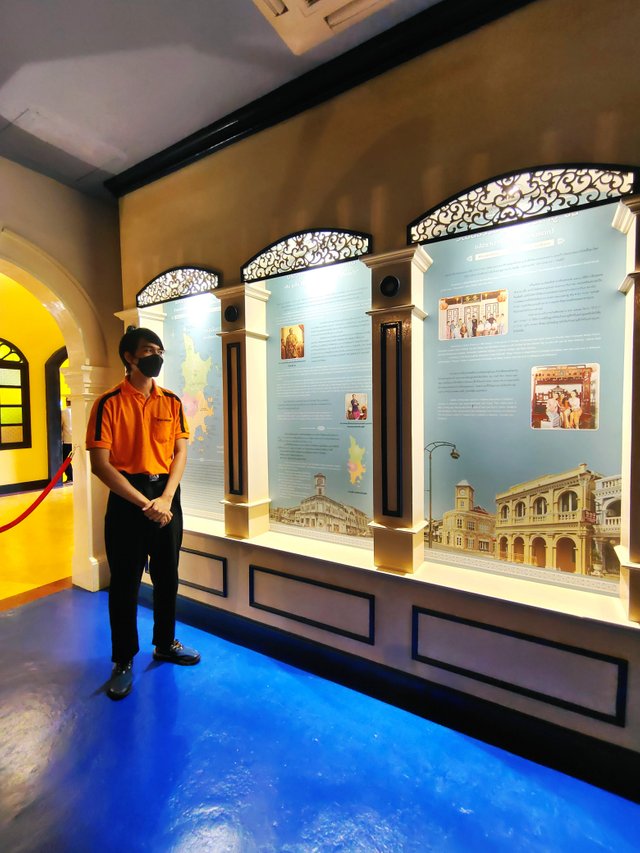
As we moved from room to room, the guide pointed out secret doors and hidden corners that I would have easily missed if I had explored the museum on my own. It was evident that the curators had carefully designed every aspect of the museum to provide a memorable and educational experience for visitors.

As I walked through the first room of the Thai Museum, I was captivated by the diverse range of exhibits on display. This room focused on the history of Phuket, highlighting how Chinese immigrants had left a lasting impact on the region’s culture, economy, and way of life.
I learned that the waves of Chinese immigration to Phuket were driven by the booming tin mining industry in the 19th and early 20th centuries. Chinese laborers and merchants sought opportunities in the growing mining sector, and their presence transformed Phuket into a bustling economic hub. Over time, many of these immigrants settled permanently, interweaving their customs, beliefs, and traditions with the local Thai culture.
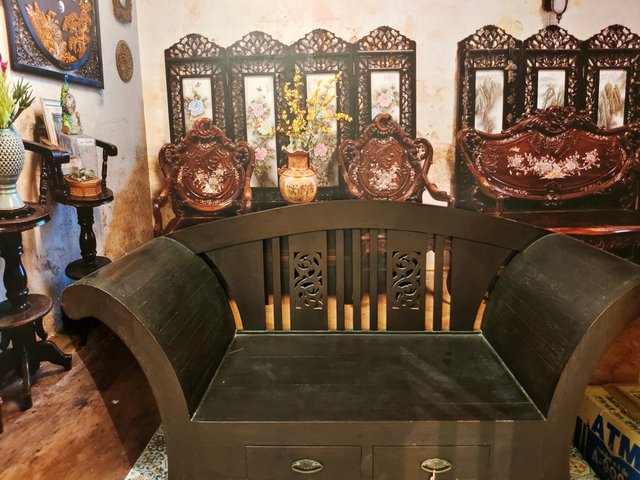
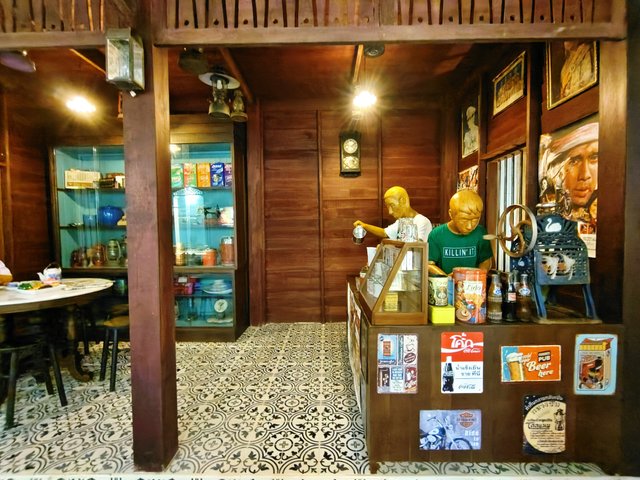
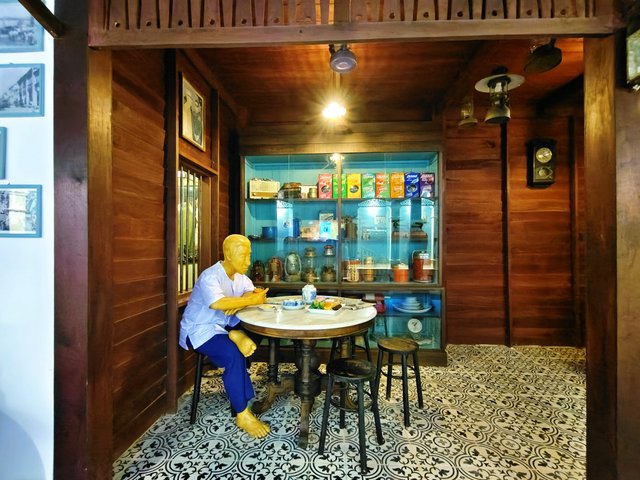
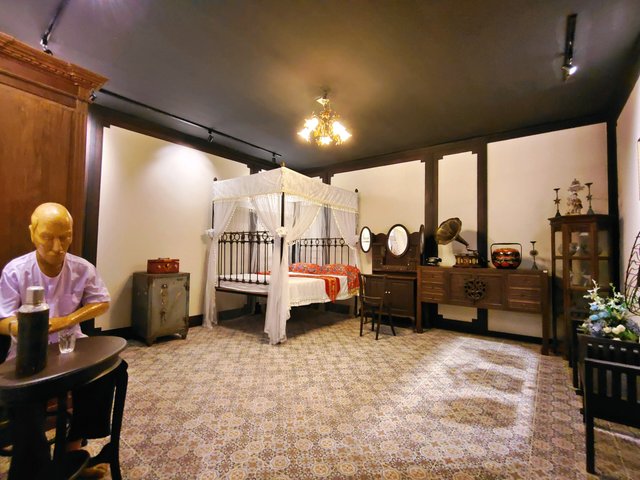
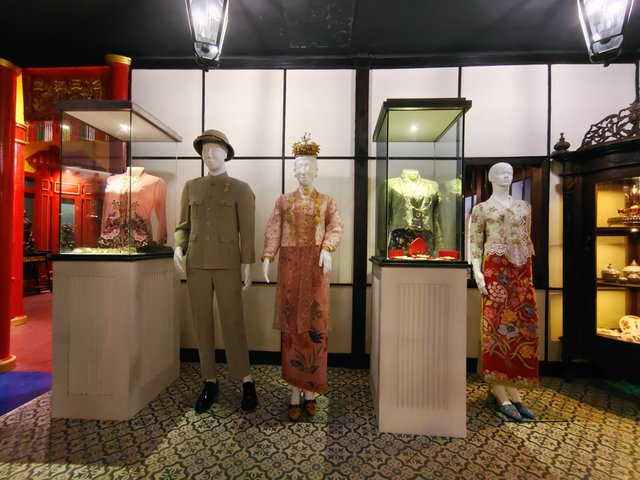
One exhibit that stood out to me was the collection of traditional Phuket costumes. The intricate designs and vibrant colors reflected a blend of Chinese and local aesthetics, a testament to the creativity of the people who had worn them. I also explored displays of traditional Phuket cuisine, which featured dishes I had never encountered before, many of which were influenced by Chinese flavors and cooking techniques.
Moving through the room, I discovered more about the region’s development and the contributions of Chinese immigrants. I learned about the vital role of the tin mining industry, which spurred economic growth for decades, and explored the unique architectural style of the “Sino-Portuguese” shophouses—beautifully blending Chinese and European elements.
Overall, the first room of the Thai Museum offered a fascinating and informative glimpse into the history and culture of Phuket. It deepened my appreciation for how the region’s rich, multicultural heritage has shaped its present identity, making Phuket not just a beautiful destination but also a place with a compelling story.
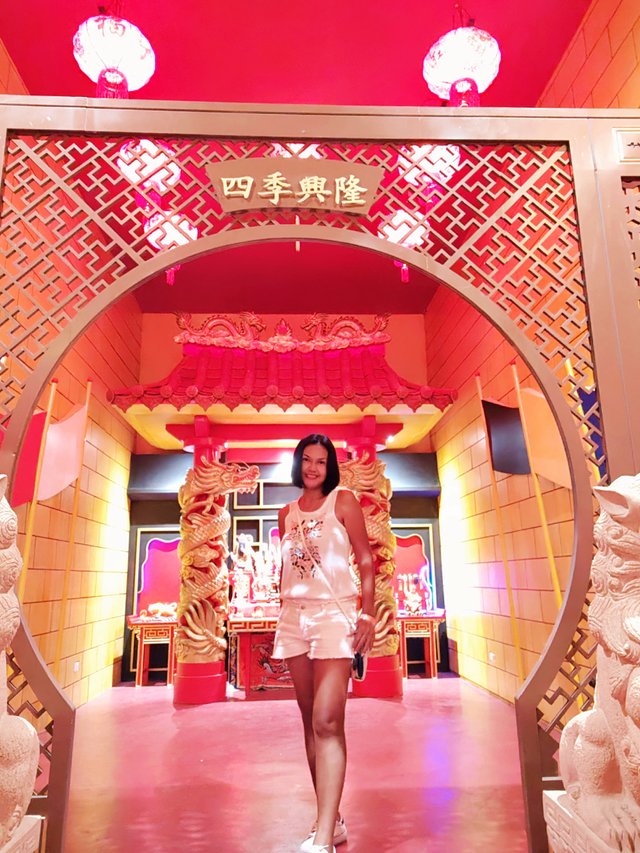
The Kathu Shrine is a significant historical and cultural site in Phuket, Thailand. Established by Chinese immigrants who arrived in the region in large numbers during the 19th century, it holds the distinction of being the first shrine of its kind in Phuket.
According to local legend, the shrine was built to honor the goddess Tin Hua (also referred to as Tin Ayutthaya), believed to protect the tin mines that were essential to the region’s economy. During the height of the mining boom, Chinese immigrants worshiped here to seek blessings and protection for their work and well-being. The shrine soon became a spiritual and cultural hub for the Chinese community, playing a pivotal role in maintaining their traditions.
The Kathu Shrine is best known today for its connection to the Phuket Vegetarian Festival, one of the island’s most famous events. The festival, which originated from this very shrine, is celebrated annually with elaborate processions, firewalking, and rituals of self-purification. Devotees believe that the festival promotes good health and spiritual cleansing. The shrine serves as the central point for several key ceremonies, including the raising of the “Go Teng” pole to invite the Nine Emperor Gods, marking the beginning of the festival. I invite you to take a look at my post: 🐉 Immersed in Phuket’s Vegetarian Festival: Rituals and History in Phuket’s Old Town 🏮
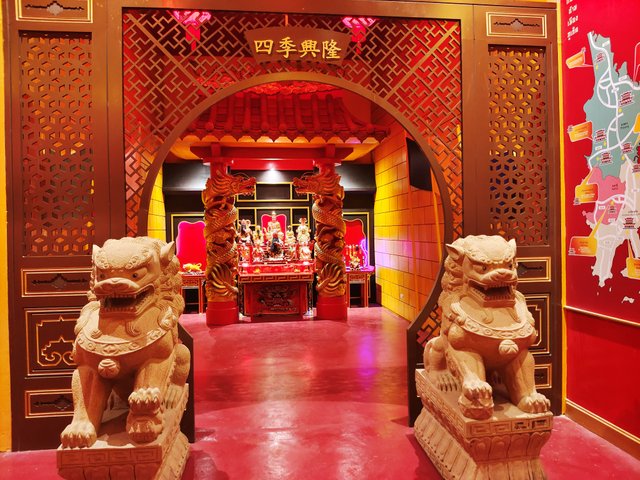
Despite its age, the shrine has been meticulously preserved. Visitors can explore the serene grounds, observe intricate Chinese architecture, and learn about the customs of Phuket’s Chinese-Thai community. Richly adorned with traditional decorations and religious symbols, the shrine provides a glimpse into the region’s multicultural heritage.
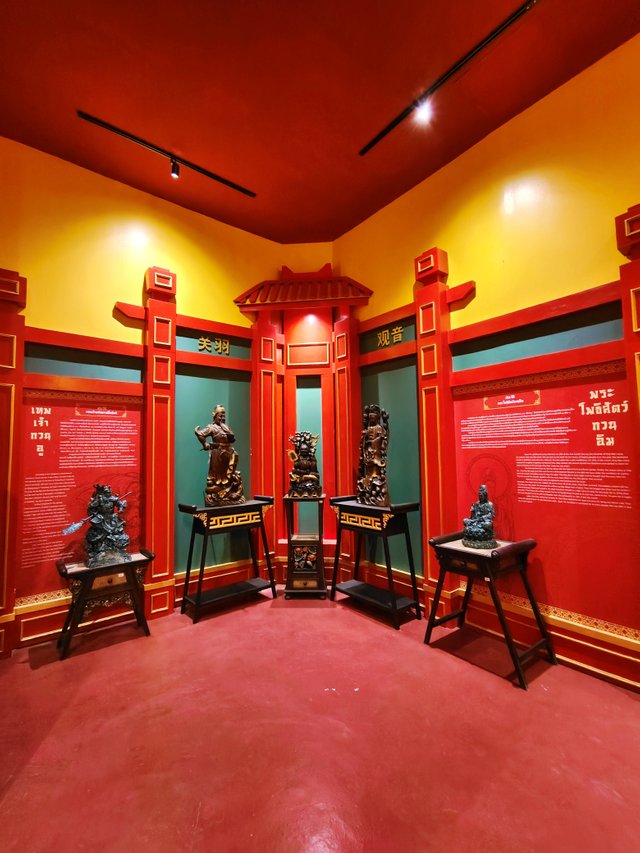
The Kathu Shrine remains a vital part of local life, drawing not only worshippers but also tourists eager to experience the unique fusion of Chinese and Thai culture. Whether you are drawn by its history, architecture, or spirituality, the shrine offers a peaceful and captivating experience, reflecting Phuket’s diverse cultural tapestry.
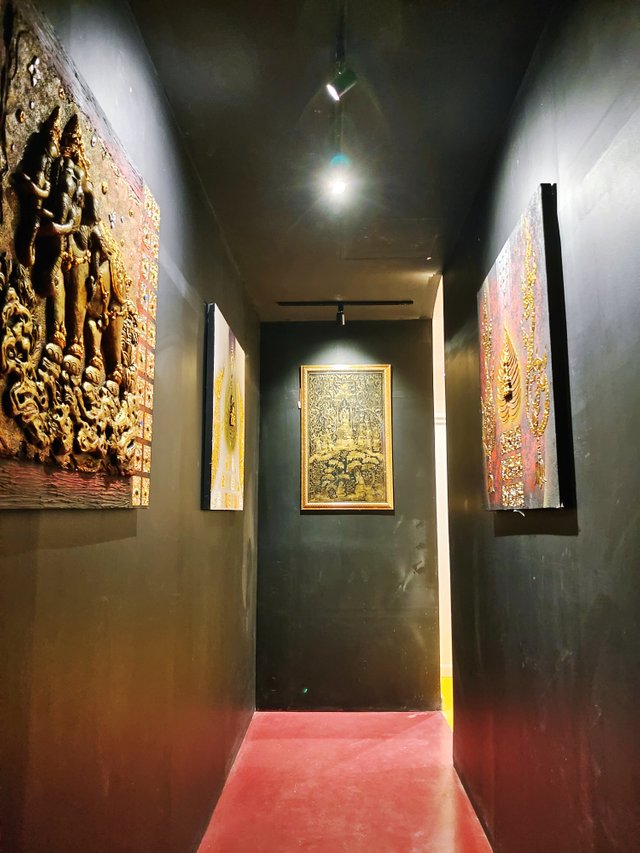
As I wandered through the corridors of the Thai Museum, I was captivated by the beautiful artwork that adorned the walls. Each piece depicted scenes from Buddhist stories and teachings, offering a glimpse into the deep spiritual traditions of Thailand.
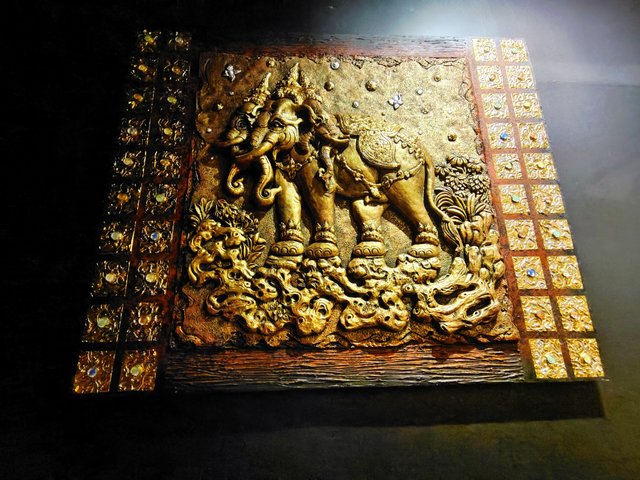
The intricate details and vibrant colors immediately caught my eye, drawing me into their serene and peaceful atmosphere. There was a sense of calm radiating from the artwork, and I found myself wishing I could take one home. Curious, I asked the guide if any of the artworks were available for purchase. To my delight and surprise, I learned that every piece on display could be purchased by visitors, giving tourists a unique opportunity to bring a piece of Thailand’s rich culture back with them.
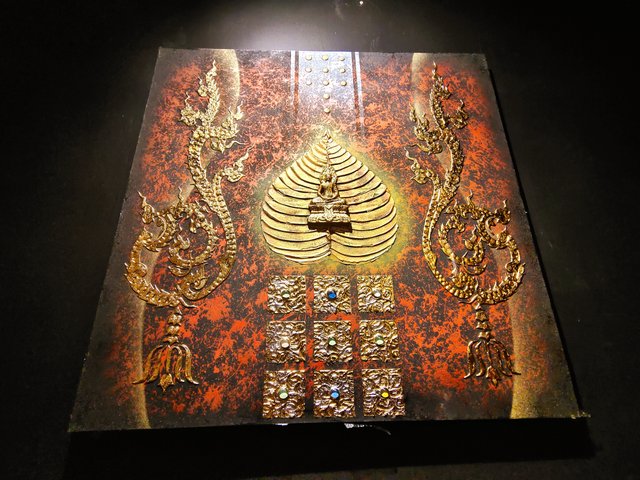
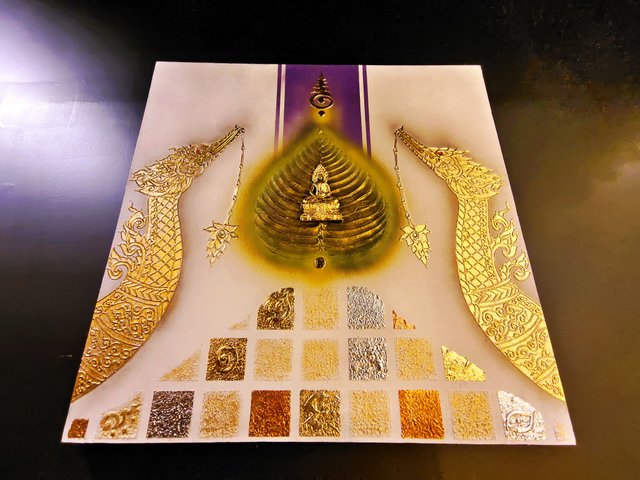
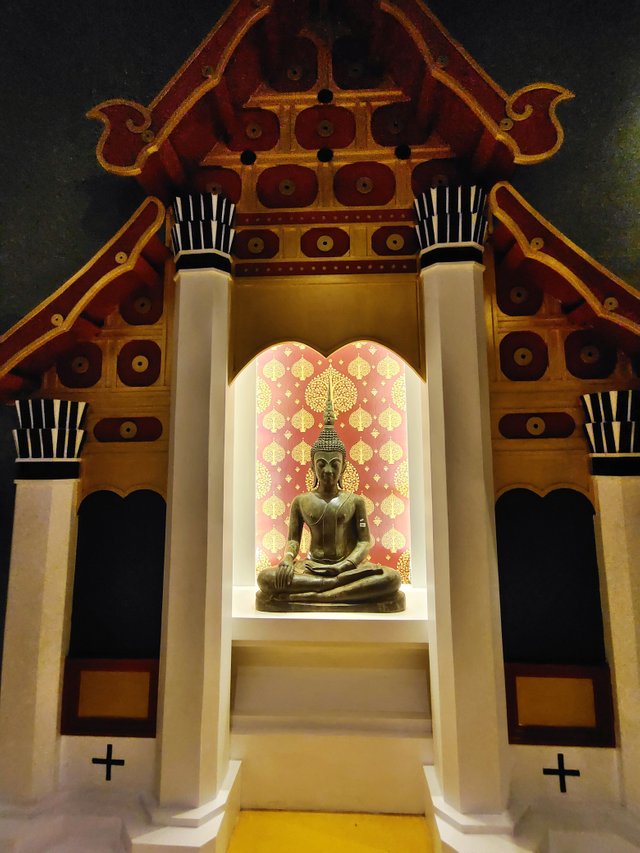
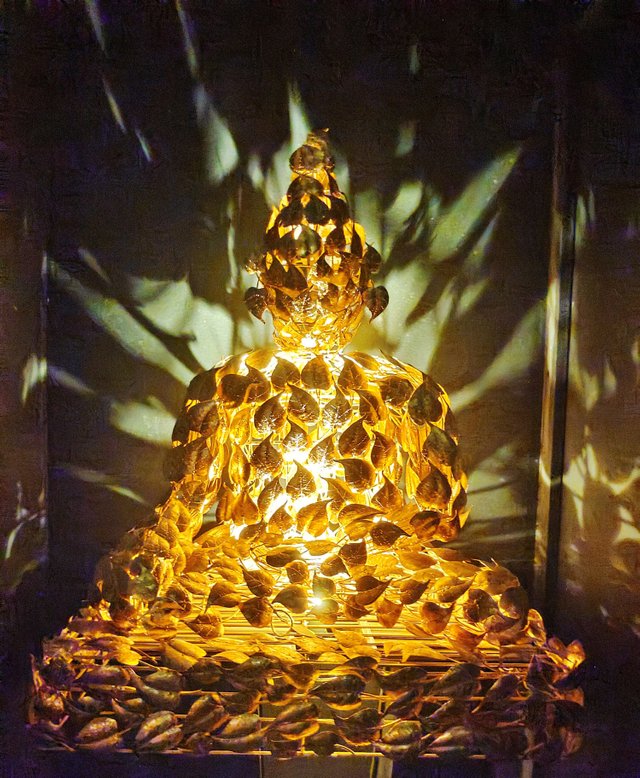
I was thrilled to discover that the Thai Museum offers packaging and delivery services for tourists who want to bring a piece of the museum home with them. Whether in Thailand or abroad, I felt reassured knowing the museum would ensure my purchase arrived safely at my doorstep.
Curious about the process, I asked the guide for more details, and I was pleased to learn that the service was both simple and convenient. The museum staff would carefully wrap and protect my purchase, ensuring it arrived in perfect condition, just as I had seen it on display. They even provided international shipping, allowing me to buy a piece of the museum no matter where I lived.
Overall, I was impressed by the museum’s dedication to excellent customer service. Whether visiting the museum in person or making a purchase from afar, I felt confident that the staff would handle every step with care and professionalism, meeting my needs with thoughtfulness and attention to detail.
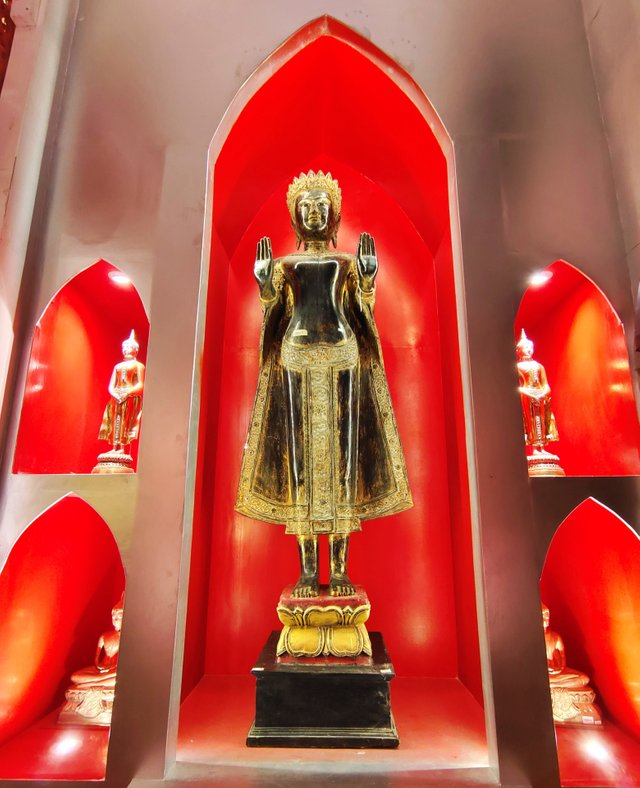
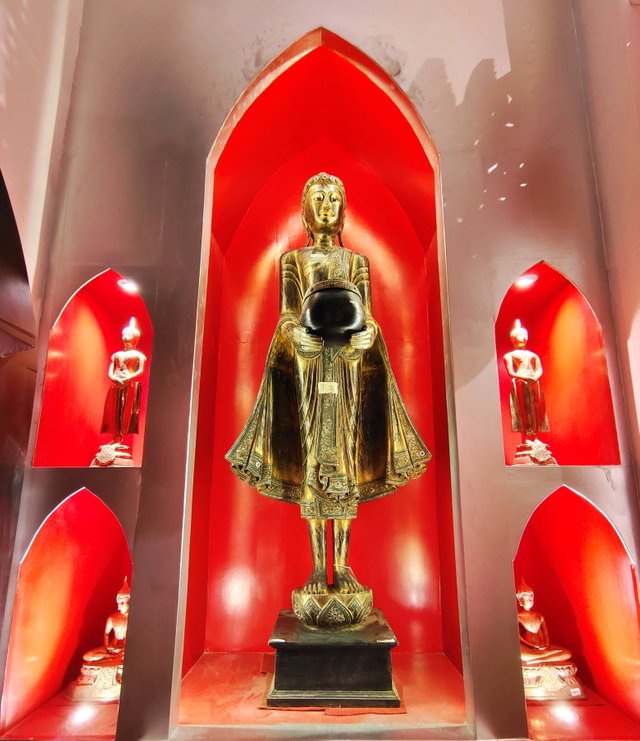
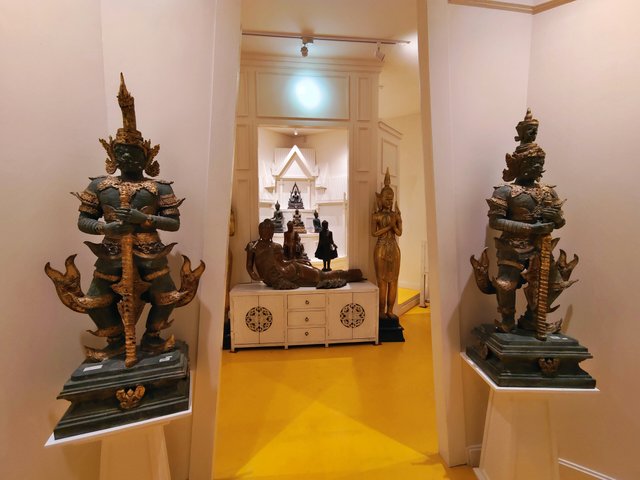
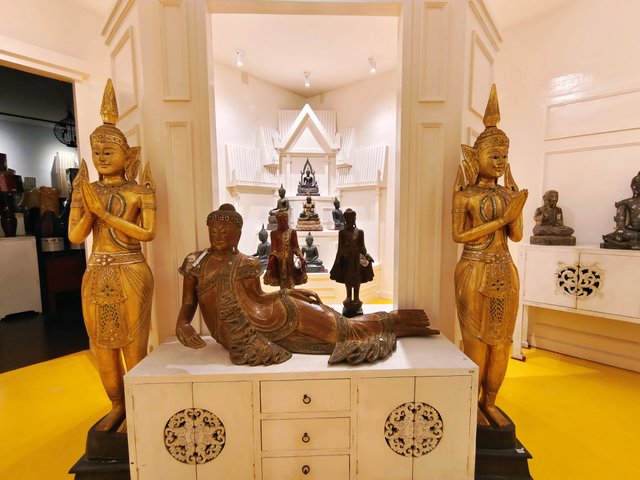
As I explored the exhibits, I was captivated by the variety of Buddha images on display. The collection featured statues and figurines from various periods of Thai history, including the Dvaravati, Ayutthaya, U-Thong, and Sukhothai periods. Each image was distinct, reflecting the artistic style, religious beliefs, and cultural influences of its era.
The Dvaravati Buddha images, for example, had simple, serene expressions, reflecting the early introduction of Buddhism to the region. The U-Thong style was characterized by a square-shaped face and strong features, while the Sukhothai Buddha figures stood out for their elegant curves and graceful postures, symbolizing spiritual enlightenment. In contrast, the Ayutthaya-period Buddhas were more ornate, often adorned with intricate crowns and robes, representing the wealth and power of the kingdom at the time.
In addition to the Buddha statues, the museum also displayed ancient utensils, such as pottery, ceremonial objects, and tools used in daily life, giving visitors a deeper glimpse into the lifestyles and customs of earlier Thai civilizations.
Overall, the Buddha images and ancient artifacts on display were a testament to Thailand’s rich history and artistic traditions. I was moved by the beauty and craftsmanship of these objects, and I left feeling grateful for the opportunity to learn more about the spiritual and cultural heritage of my fascinating country.
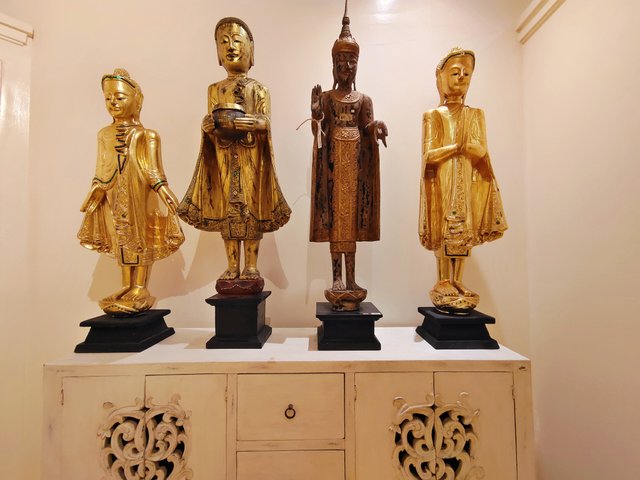
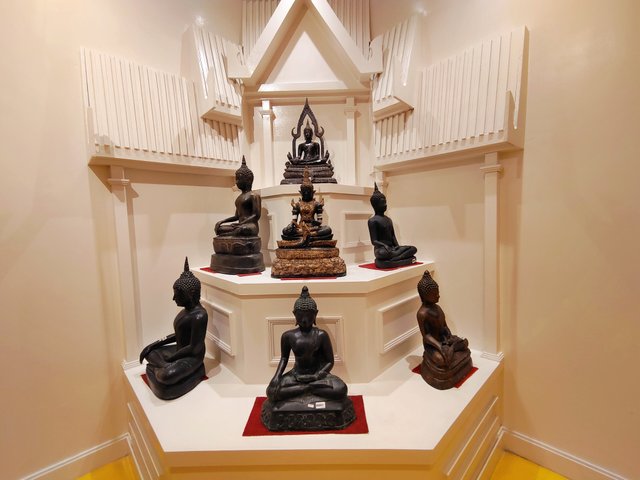
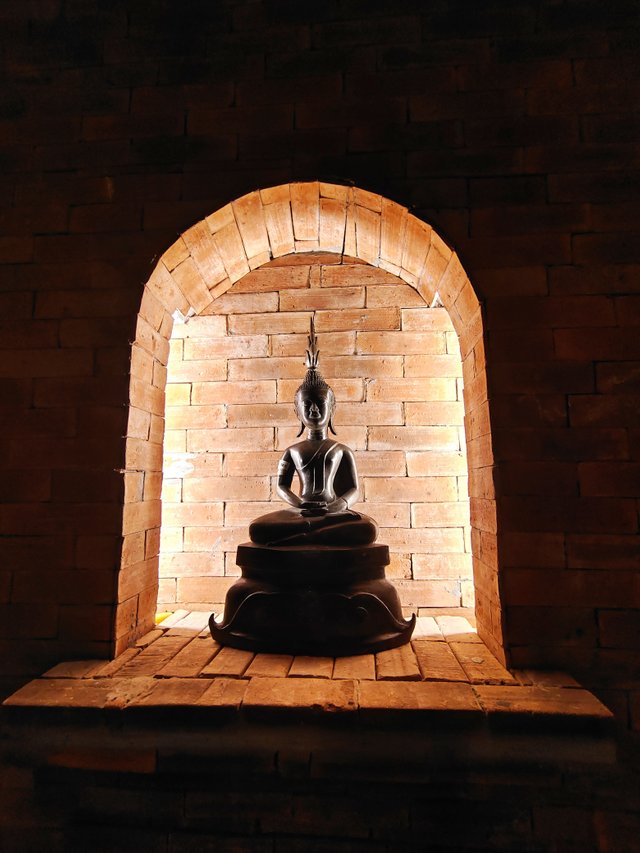
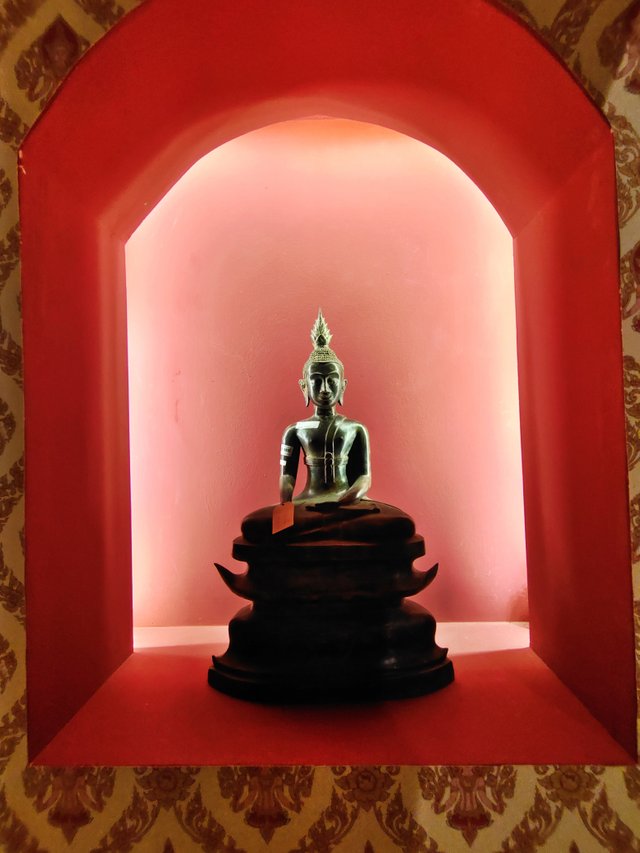
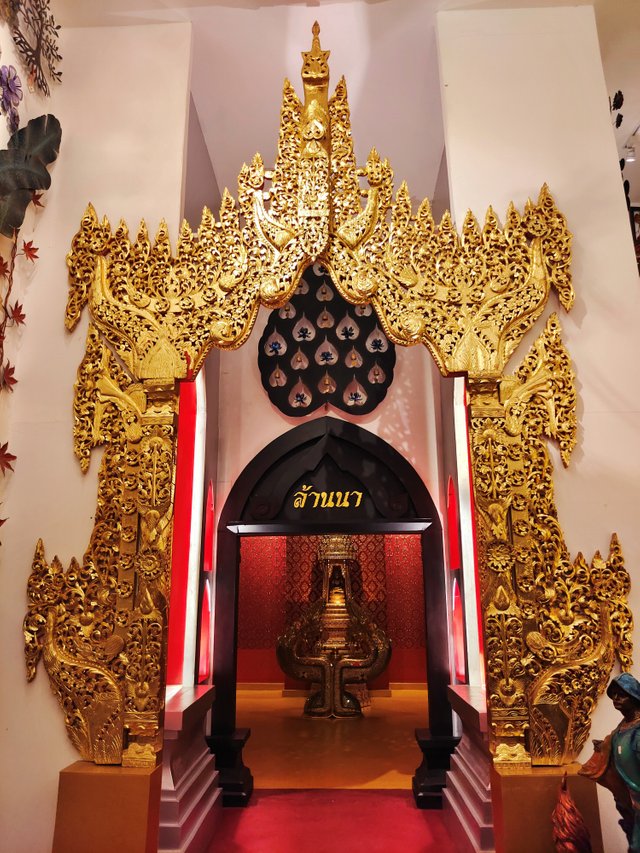
As I entered the room dedicated to the Lanna period of Thai history, I was immediately captivated by the beauty of the art and artifacts on display. This northern kingdom, centered around Chiang Mai, flourished between the 13th and 18th centuries, and its artistic traditions reflect a unique blend of Buddhist, Burmese, and Lao influences.
The room featured intricate lacquerware pieces with shimmering black and gold designs, illuminated brass objects used in religious ceremonies, and elaborate wood carvings that seemed to tell stories from both daily life and Buddhist teachings. These works conveyed not just beauty but also the deep spirituality that permeated Lanna culture.
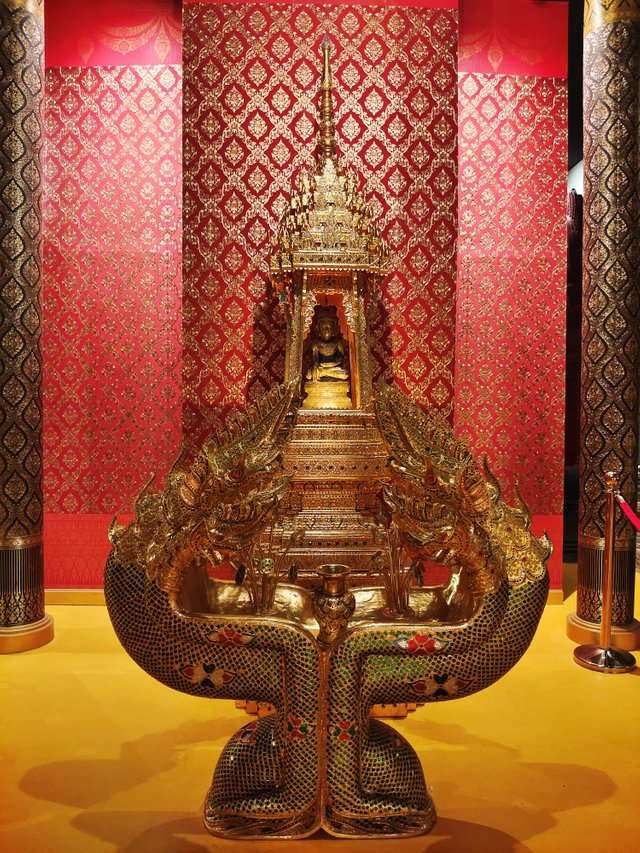
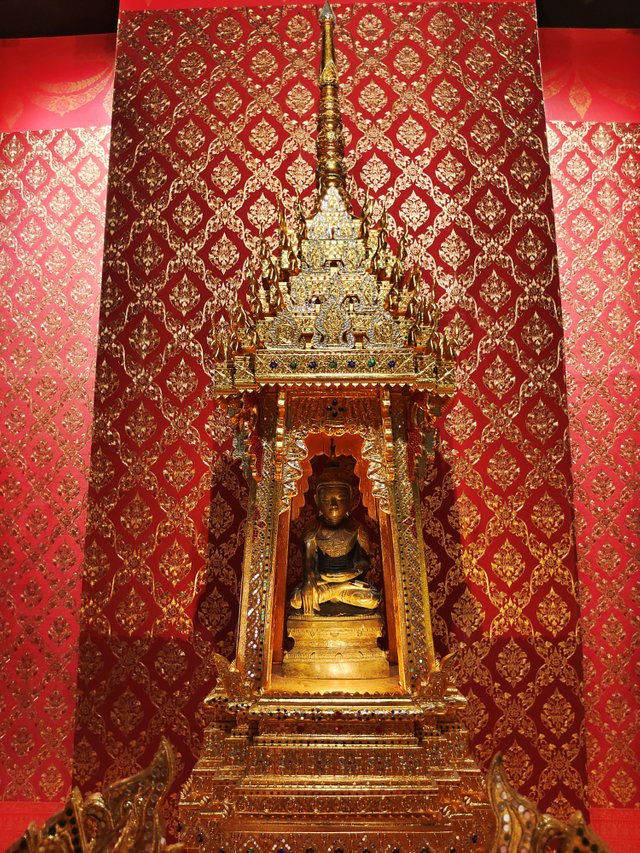
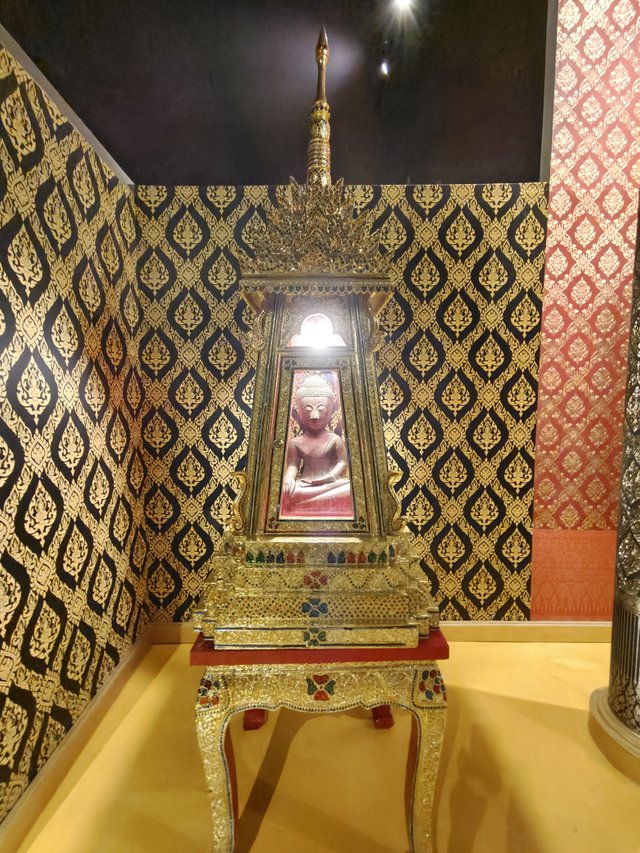
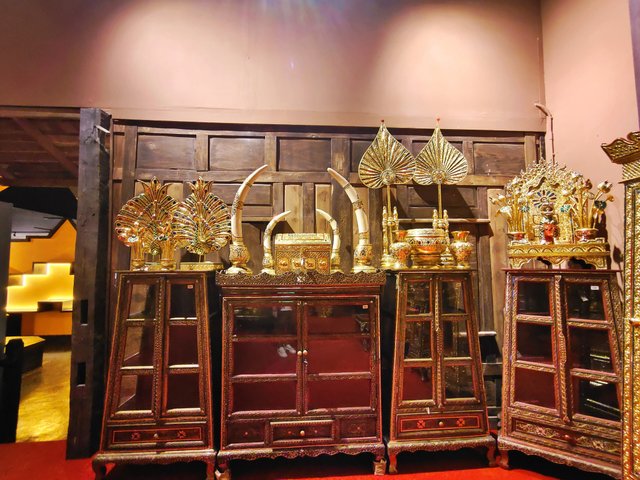
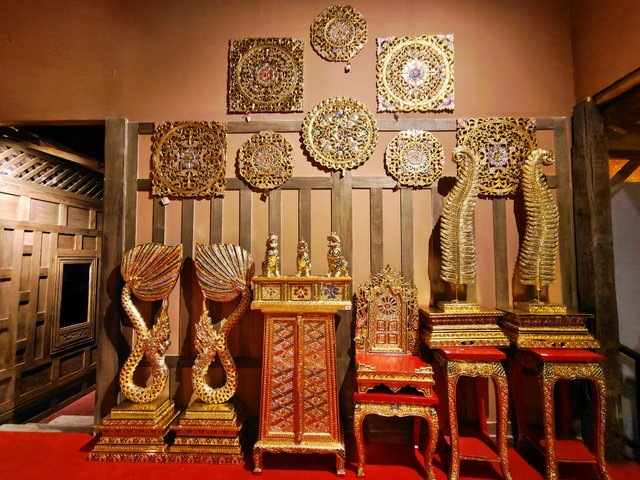
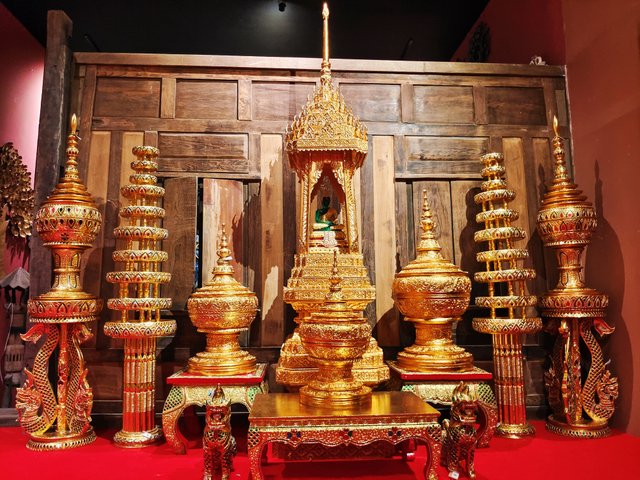
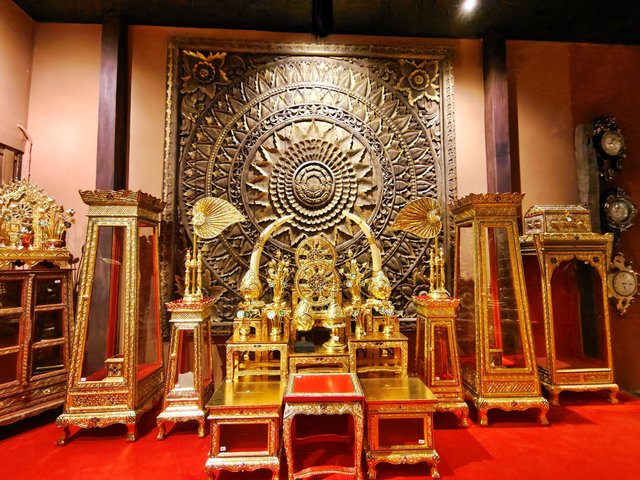
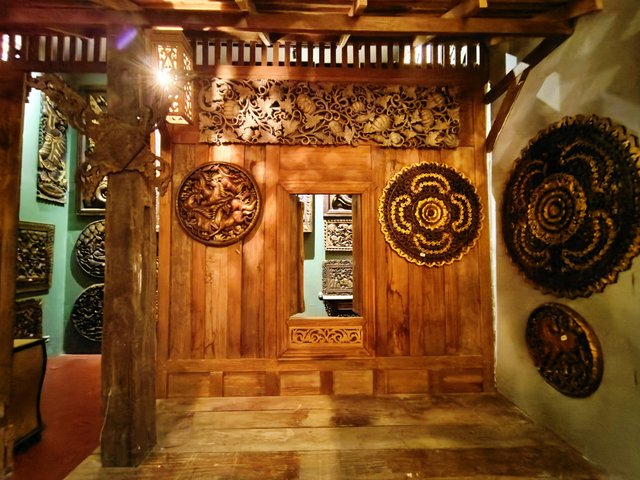
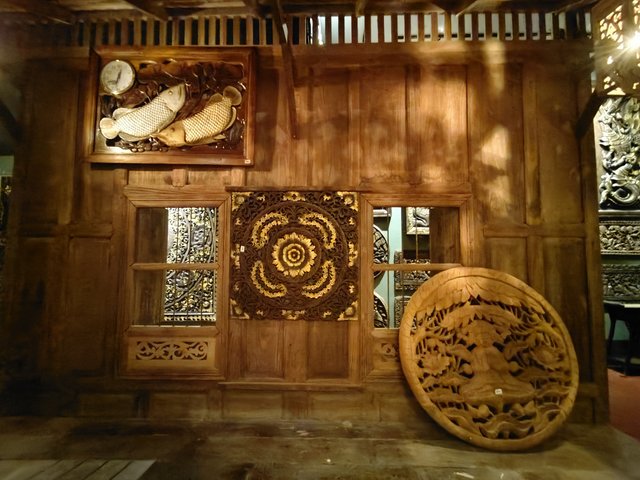
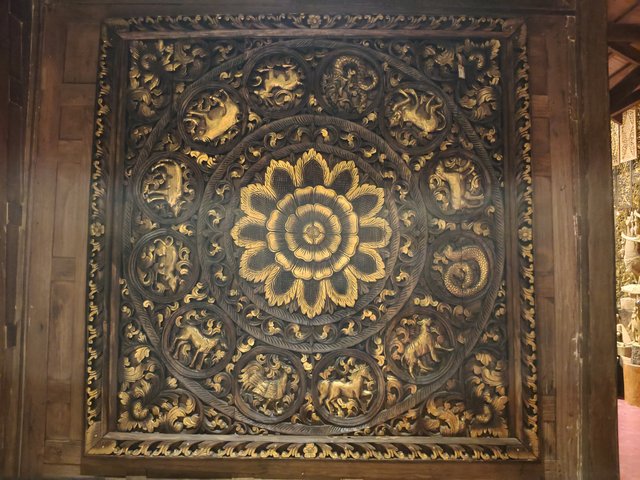
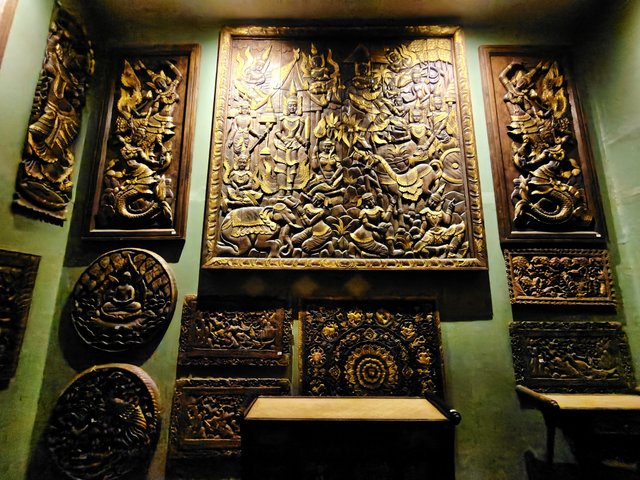
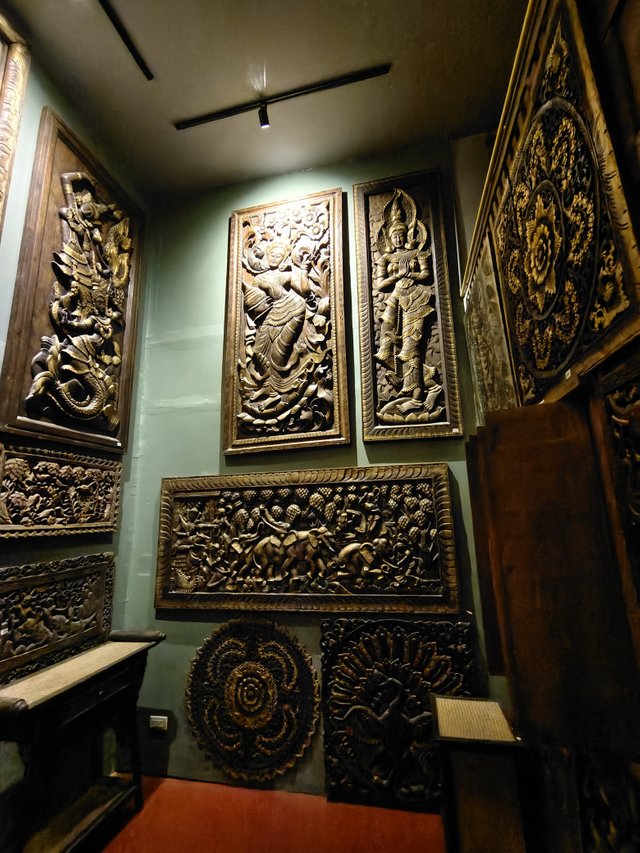
I was particularly drawn to the wood carvings, which displayed an exceptional level of skill and craftsmanship. Some depicted scenes from the Jataka tales—stories of the Buddha's previous lives—while others featured elegant floral motifs or depictions of mythical creatures like nagas and garudas. Each carving felt like it had a soul of its own, as if it carried the emotions and intentions of the artisans who had crafted it. I lingered in front of each one, imagining the hands that had shaped the wood and the stories they wished to tell through these creations.
The art from the Lanna period showcased at the Thai Museum was a testament to Thailand’s creative and spiritual heritage, reflecting the deep connection between art, religion, and daily life during that era. I left feeling inspired by the beauty and craftsmanship on display and grateful for the chance to immerse myself in the history of this remarkable region.
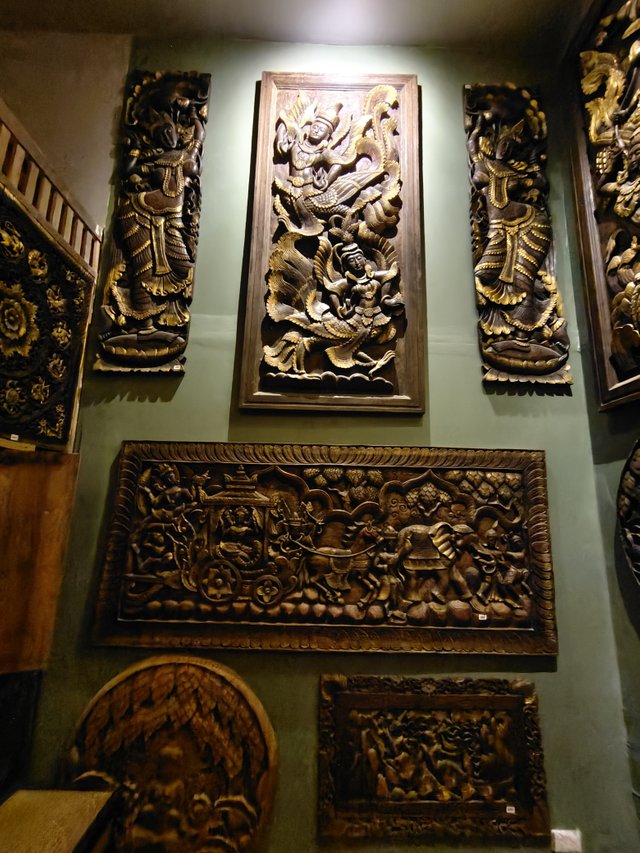
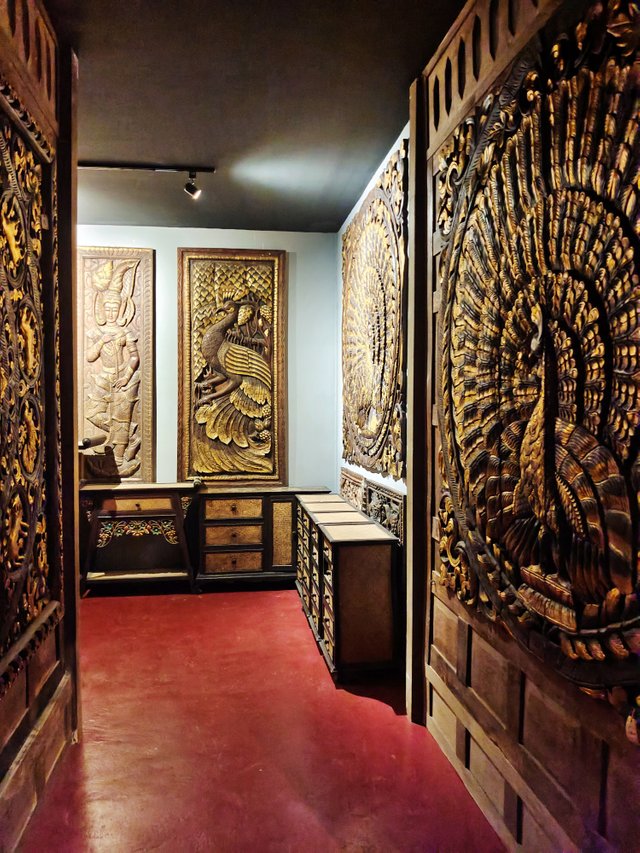
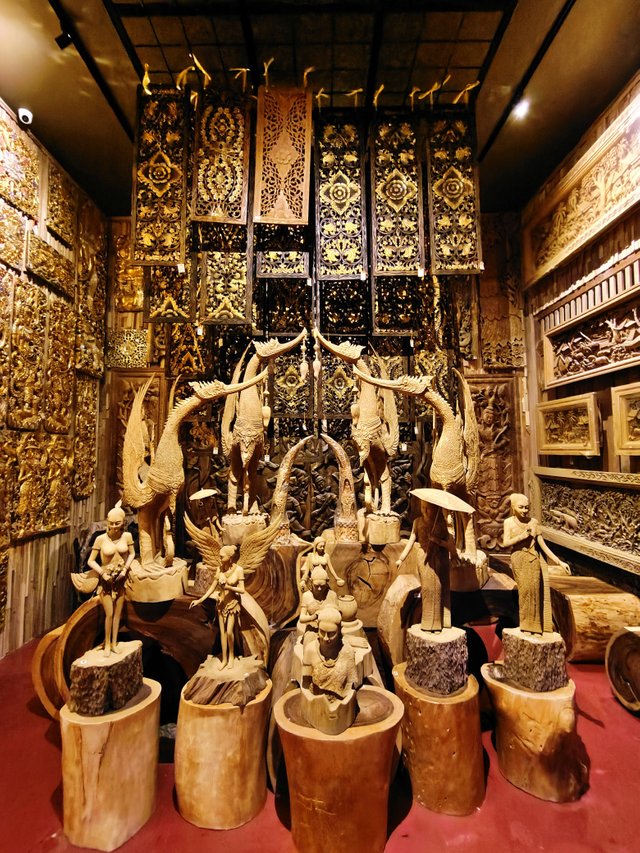
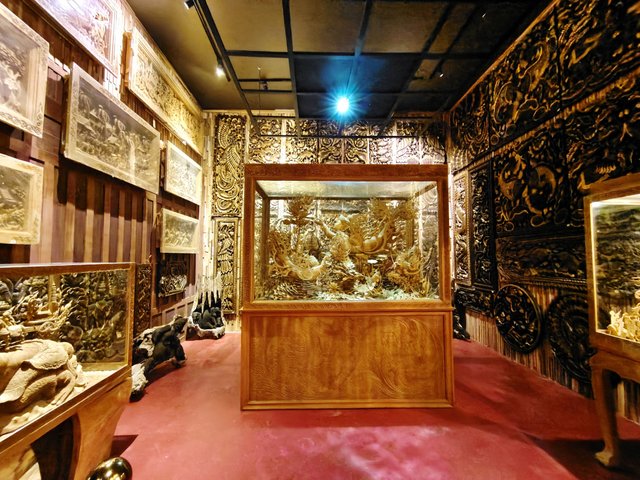
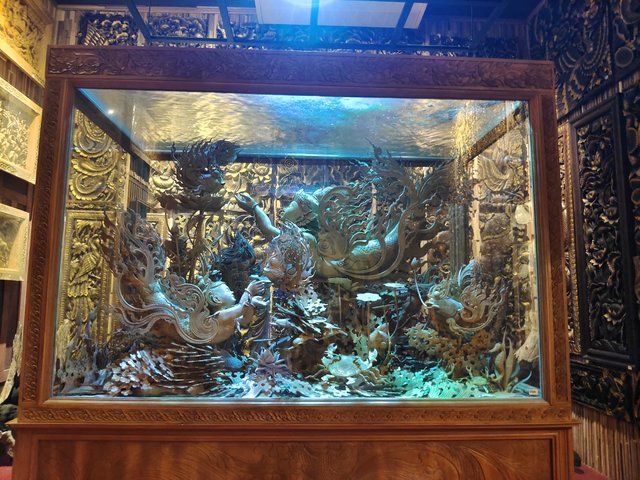
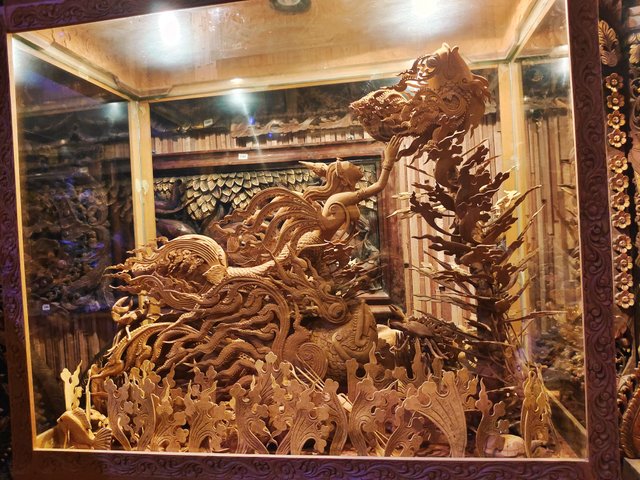
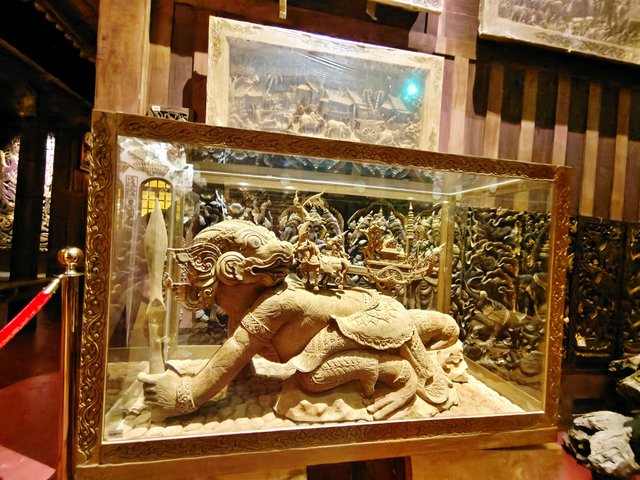
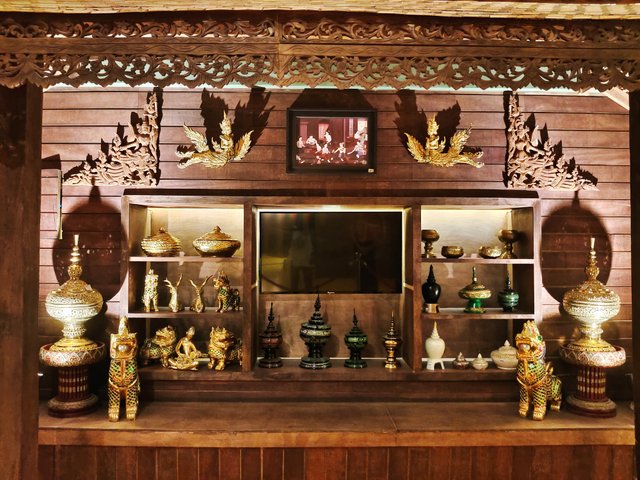
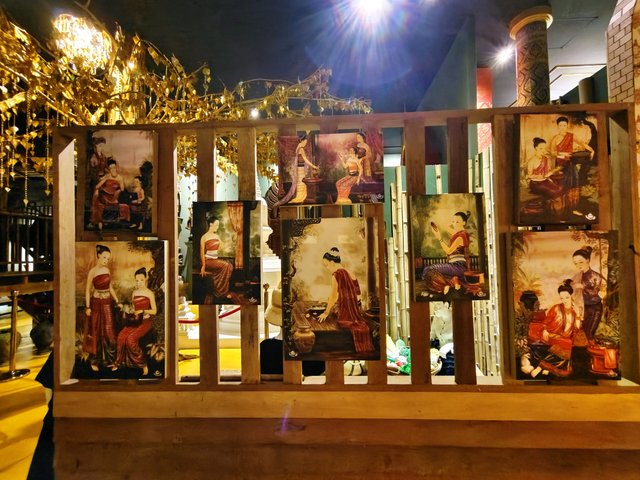
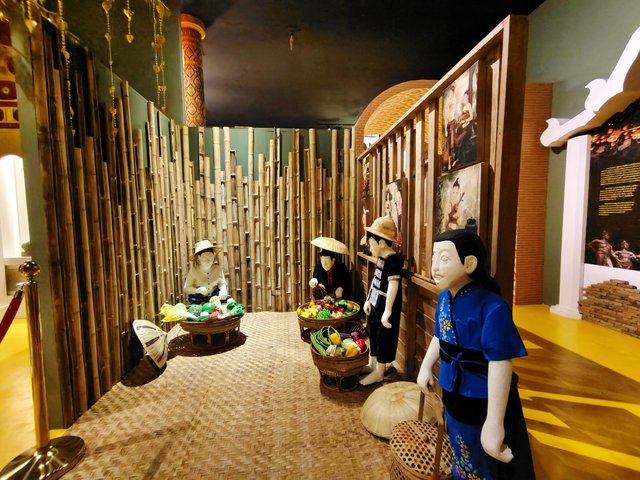
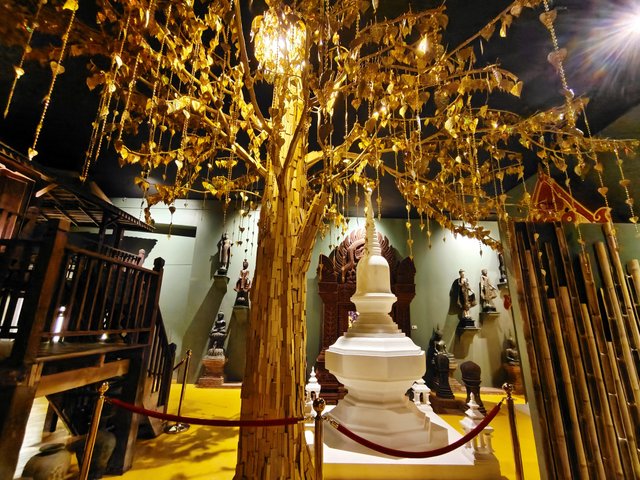
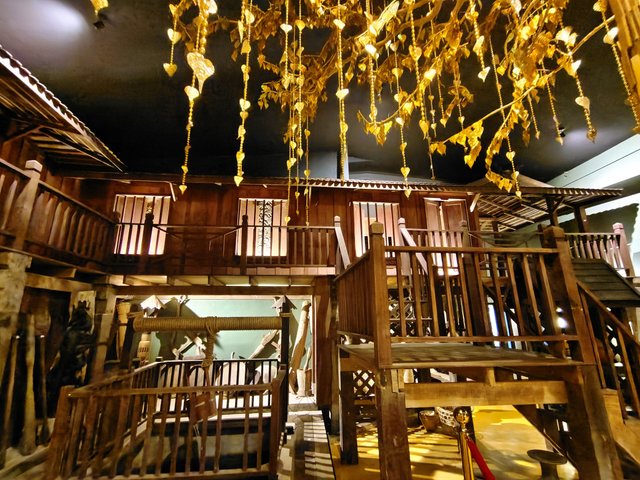
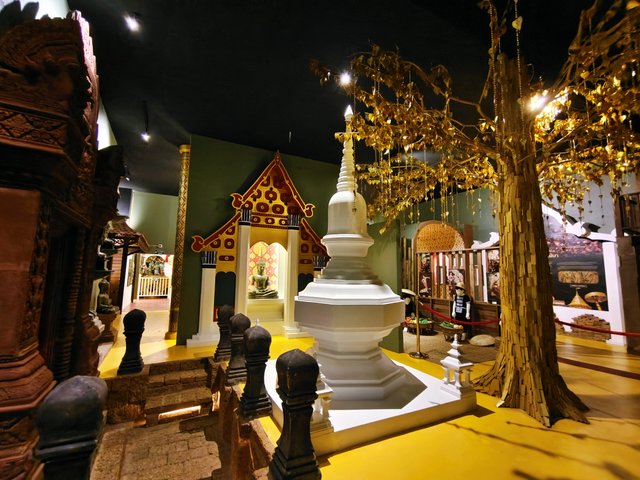
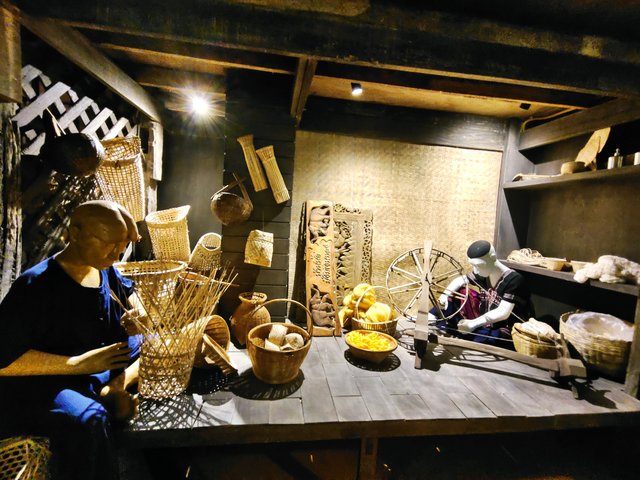
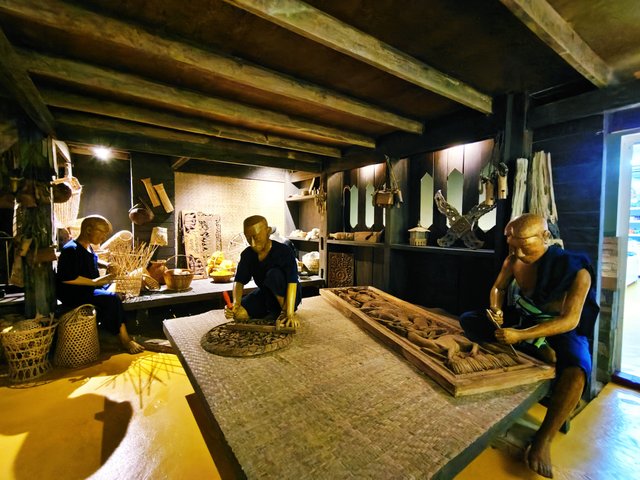
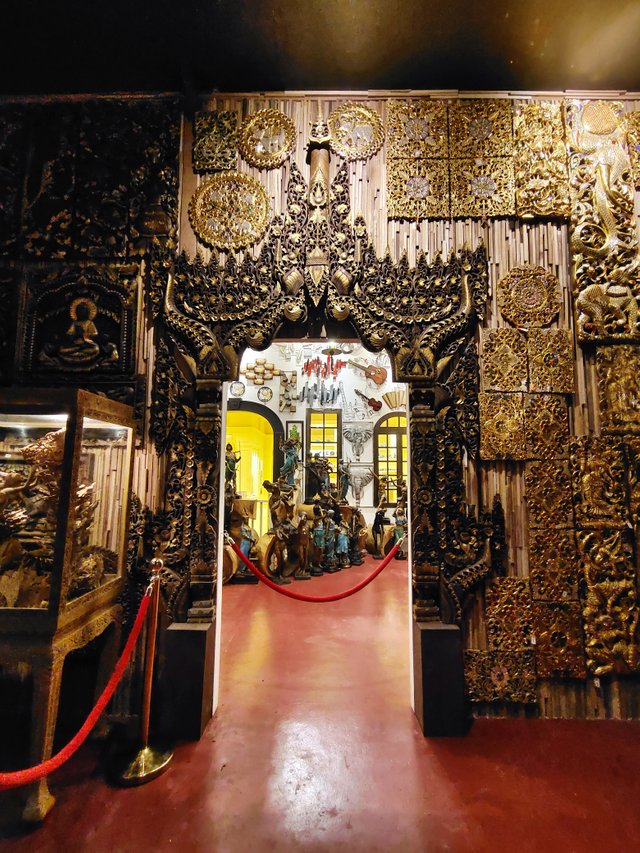
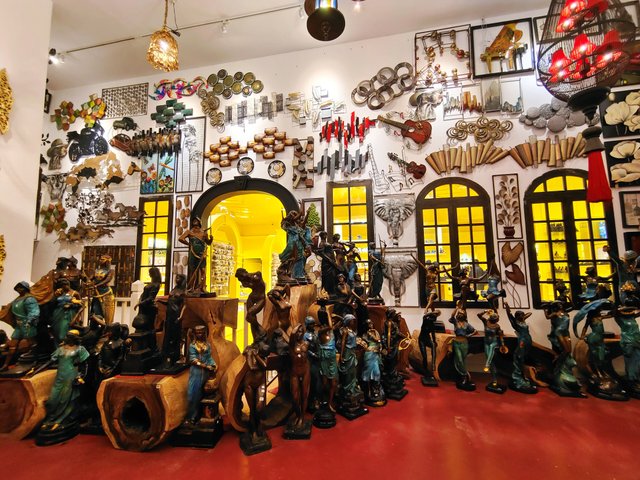
As I continued my tour of the Thai Museum, I was struck by the variety and richness of the exhibits. Each room seemed to open a new chapter in Thailand’s history, revealing fascinating aspects of its culture and heritage. Although there were many more rooms to explore, the guide hinted that he preferred to keep some surprises for visitors to discover on their own.
Despite this, I was already amazed by everything I had seen and eagerly anticipated what lay ahead. The guide mentioned that the final room was dedicated to contemporary art, promising a special experience unlike the earlier, more traditional exhibits.
As we stepped into the last room, I was immediately drawn to the vibrant, modern artworks on display. The pieces were bold, expressive, and filled with striking colors and unconventional styles, offering a stark yet intriguing contrast to the historical artifacts I had seen earlier. The room felt alive with creativity, reflecting how Thailand’s art scene has evolved to embrace new forms and ideas while still being rooted in its cultural identity.
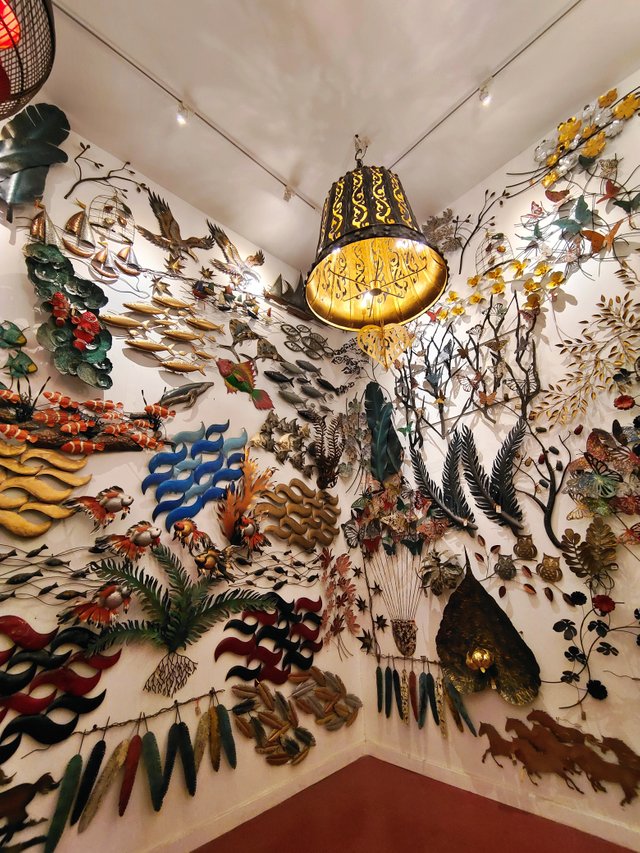
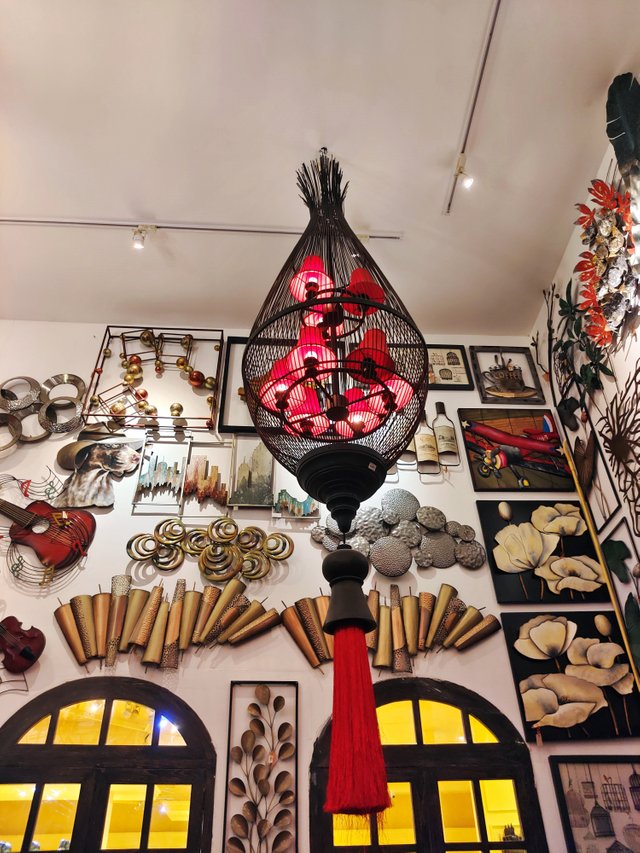
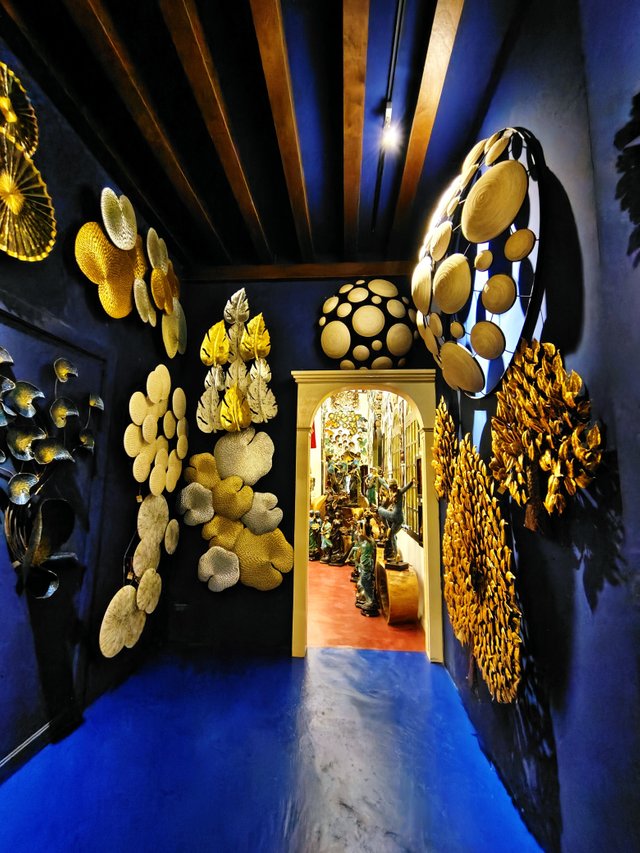
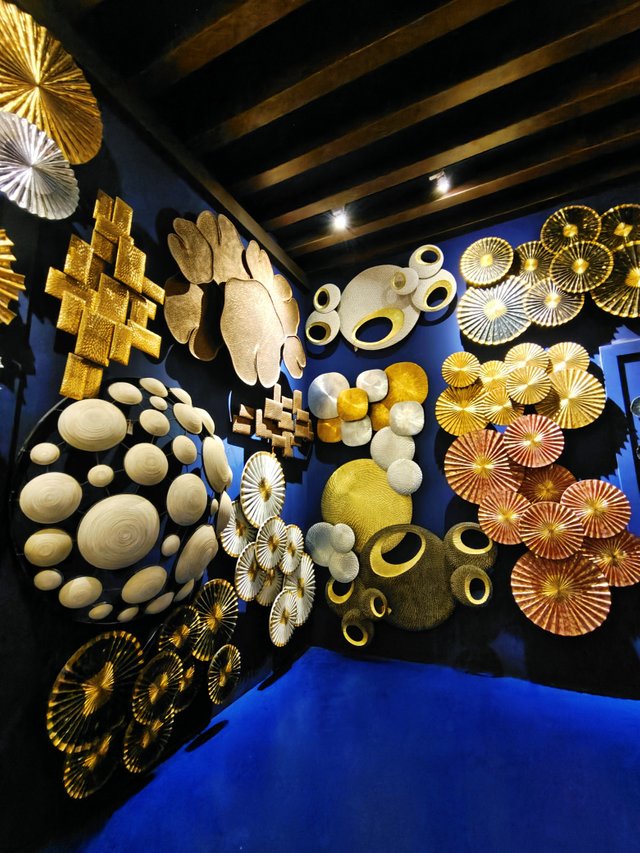
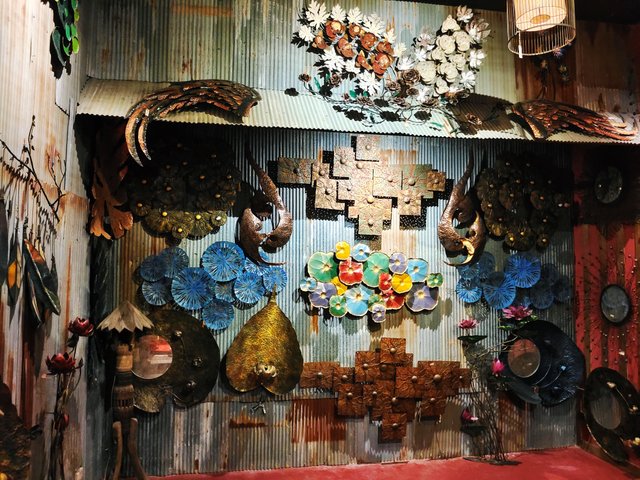
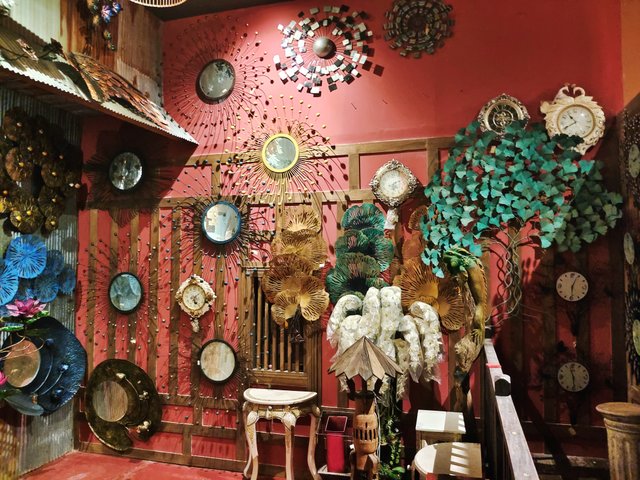
Overall, my visit to the Thai Museum was a truly enriching experience. I left feeling deeply inspired—not only by the beauty and craftsmanship of the traditional exhibits but also by the dynamic energy of the contemporary art. The museum offered a perfect blend of past and present, reflecting the richness of Thailand’s history and the creativity shaping its future.
I know I will return, eager to discover new exhibits and explore even more facets of Thailand’s ever-evolving culture. If you find yourself in Phuket, I highly recommend a visit to this remarkable museum—whether you come to admire the ancient artifacts or immerse yourself in the modern art, you are sure to leave with a deeper appreciation for the soul of Thailand.
See you soon for a new adventure!
Feel free to follow me and drop a comment — I’d love to hear from you. 🌸
Sawadee kha! 🙏
@Baiboua -|- 🌸 My Achievement 1 post: Greetings from Phuket 🏝️ Thailand 🇹🇭
THE QUEST TEAM has supported your post. We support quality posts, good comments anywhere, and any tags
Downvoting a post can decrease pending rewards and make it less visible. Common reasons:
Submit
Thanks a lot for the support 🌸
Downvoting a post can decrease pending rewards and make it less visible. Common reasons:
Submit
You've got a free upvote from witness fuli.
Peace & Love!
Downvoting a post can decrease pending rewards and make it less visible. Common reasons:
Submit
Thank you 🌸
Downvoting a post can decrease pending rewards and make it less visible. Common reasons:
Submit
Hello traveler! 👋🏼
Thanks for sharing your post in the TS Community. Here you are the feedback and evaluation results:
~ Join the Discord server + Telegram group and have a happy day.👍🏼
Curated by @benoitblanc
Downvoting a post can decrease pending rewards and make it less visible. Common reasons:
Submit
Thanks for the feedback and evaluation 🌸
Downvoting a post can decrease pending rewards and make it less visible. Common reasons:
Submit